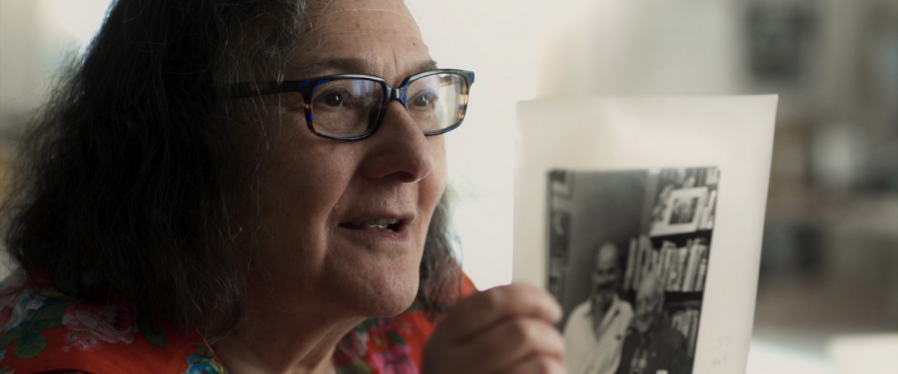Photographer Elsa Dorfman is known for her large-format Polaroid portraits, created on 20-by-24-inch instant film, using one of the five cameras originally built by the company, which stopped making the specialized film after it went bankrupt in 2008. Dorfman stockpiled as much of it as she could get her hands on, but as it ran out, the artist, now 80, decided to retire a couple of years ago.
Directed by the idiosyncratic documentarian Errol Morris (“The Unknown Known”), “The B-Side: Elsa Dorfman’s Portrait Photography” is a love letter to Dorfman, who is also the filmmaker’s friend. Both are based in Cambridge, Mass., where Morris and his family have sat for Dorfman’s camera many times over the years. Now it’s her turn in front of the lens.
“B-Side” is structured, for the most part, as a conversation between Morris and Dorfman, who is shown pulling out one giant print after another from storage cabinets as she talks about the subjects (including the late writer Allen Ginsberg and other literary luminaries) and her working methods. Typically, Dorfman offers clients a selection of two shots; one print goes to the customer, and she keeps the reject (or B-side) — which is often, as it turns out, the more intriguing of the two images.
Along the way, she stops to muse on the ephemerality of life: Ginsberg’s death, Dorfman’s advanced age, the demise of Polaroid and the fact that her once-vibrant prints are now starting to fade all underscore a single theme — one that’s echoed in the still unresolved question of what will become of Dorfman’s archive after she’s gone. Though her work is owned by several museums, including Harvard University’s Fogg Museum, the National Portrait Gallery and the San Francisco Museum of Modern Art, no institution or patron has yet come forward to rescue her archive from encroaching oblivion.



